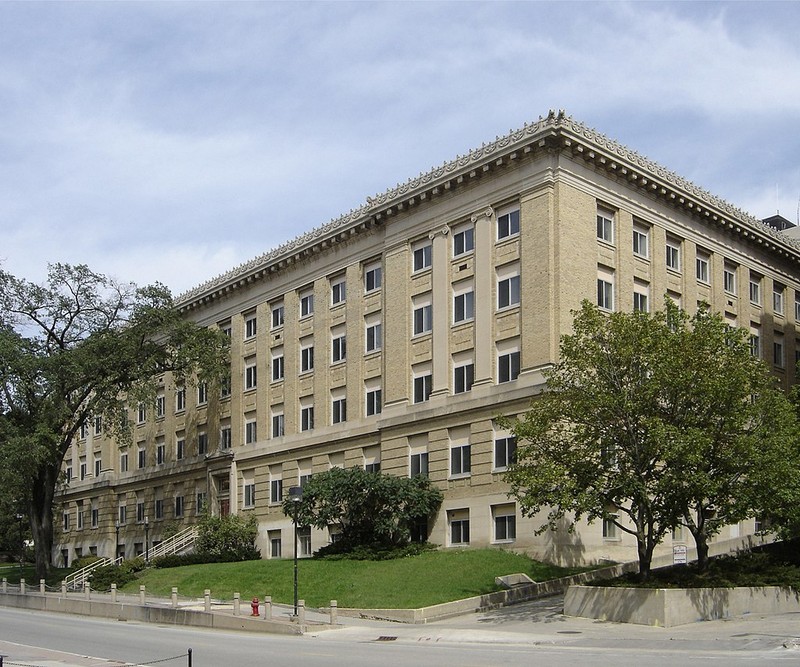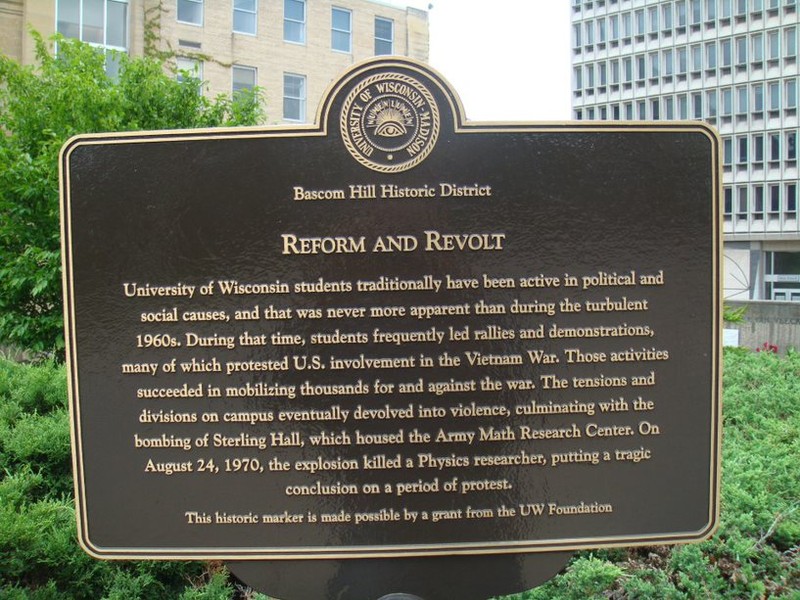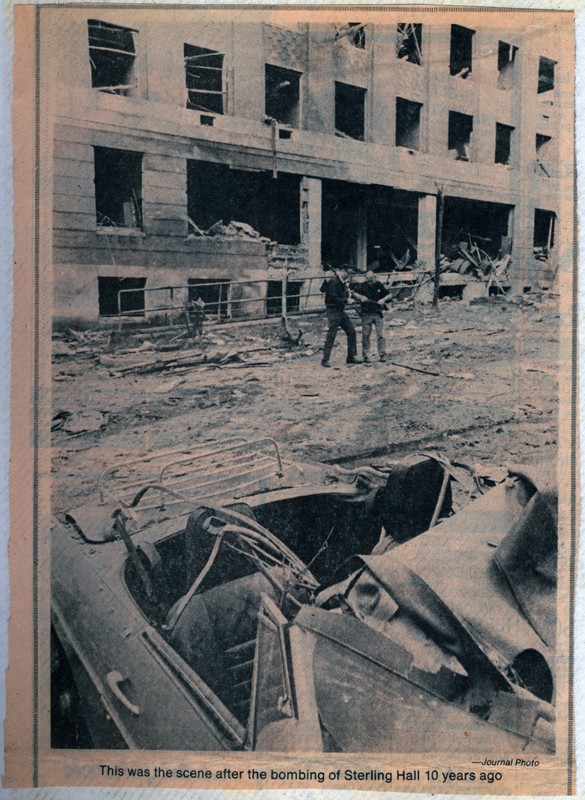Sterling Hall
Introduction
Text-to-speech Audio
Images
Sterling Hall

Sterling Hall Historic Marker Plaque

Newspaper clipping printed 10 years after the bombing at Sterling Hall. The image features the wreckage at Sterling Hall, showing two men standing amongst debris, and a car in the front of the image, also filled with debris.

Backstory and Context
Text-to-speech Audio
Sterling Hall housed the university physics department, as well as the United States Army Mathematics Research Center (AMRC). The AMRC, which performed research for the United States Department of Defense, had previously been the target of demonstrations. Robert Fassnacht, a postdoctoral researcher, was killed in the early morning blast. His research had no connection to the AMRC. Four others — three in Sterling Hall and one across the street at University Hospital — were injured.
The University of Wisconsin campus, site of the Dow Chemical protests in 1967, had an active anti-war culture during the Vietnam War. Students and residents regularly gathered for protests and demonstrations against the involvement of the U.S. military in Vietnam. Three of the four bombers — David Fine and brothers Karl and Dwight Armstrong — eventually served prison time. The fourth, Leo Burt, remains at large. Burt and Fine were UW–Madison students at the time.
Sources
“Archival photos: Remember the UW-Madison Sterling Hall bombing 49 years ago.” June 6, 2020. https://madison.com/wsj/news/local/education/university/archival-photos-remembering-the-uw-madison-sterling-hall-bombing-49-years-ago/collection_d122a408-25ed-5ce0-ac97-7de68b69fe23.html
“Sterling Hall Bombing.” June 6, 2020. https://en.wikipedia.org/wiki/Sterling_Hall_bombing
"Sterling Hall bombing: Seven men linked by a moment in history.” June 6, 2020. https://madison.com/wsj/news/local/education/university/sterling-hall-bombing-seven-men-linked-by-a-moment-in-history/article_6817a970-a981-11df-9407-001cc4c03286.html
"When bomb tore through Sterling Hall 50 years ago, he was inside: ‘I still have flashbacks.’" February 9, 2021 https://news.wisc.edu/when-bomb-tore-through-sterling-hall-he-was-inside-i-still-have-flashbacks/
JabberWok at the English-language Wikipedia, CC BY-SA 3.0 <http://creativecommons.org/licenses/by-sa/3.0/>, via Wikimedia Commons
Olson, Michael G. Sterling Hall Historic Marker Plaque May 26, 2020, Madison.
James J. Kasparek, Mss2003.173. Wisconsin Veterans Museum (Madison, Wis).
